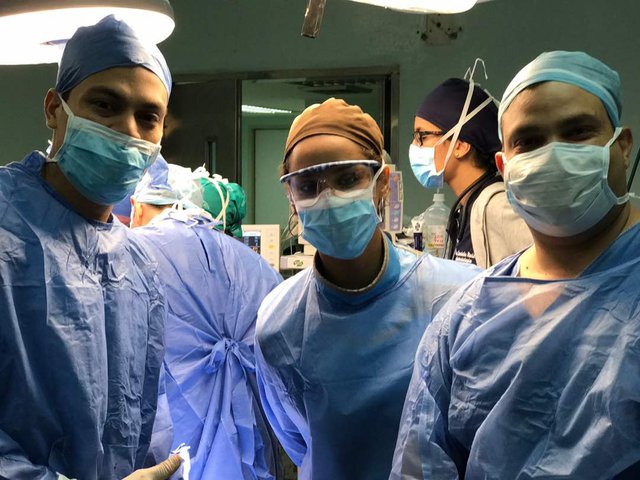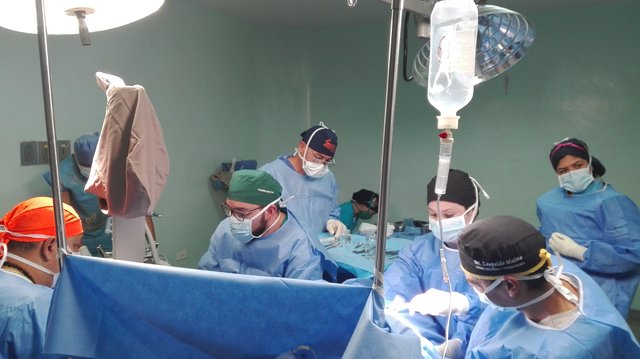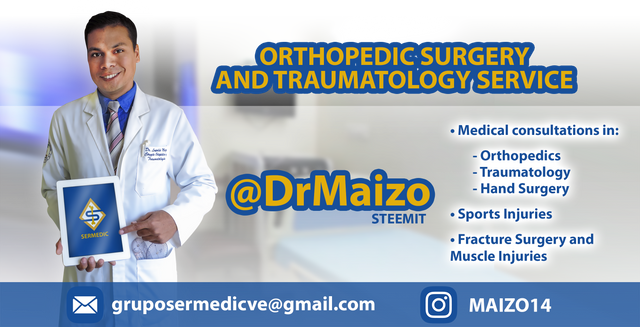Surgeon's Case: Fractured knee. (By. Dr. Maizo)

Knee Fracture
When we talk about fractures of the knee, we are going to include fractures that occur from the most distal part of the femur, to fractures that have occurred in the most proximal part of the tibia and fibula. As usually happens with fractures that are going to present more complications, they are those that are located inside the joint or those that are accompanied by soft tissue injury.
The surgeries of the knee and especially of the bony part formed by the femur are characterized by their great complexity, for being of great importance and bringing great changes. It is a surgery of one of the most important bones of the human being, of vital relevance for the march and the primary actions of life. The femur, located in the thigh region, is the longest, strongest and most voluminous human bone, an important source of red blood cell production at the level of the bone marrow and the axis of almost all the levers of the lower limb.


What is a fracture?
The fracture is the loss of the continuity of a bone structure, which generates a pain intensity and limitation of the functionality of the affected area. Depending on the degree of affectation reached by a fracture, it may or may not require surgical intervention.
Symptoms and signs of fractures
Fractures have symptoms and signs of characeristics, which are:
- Deformity of the affected area
- Hematoma
- Inflammation
- Inability to move the area.
- Fever may even be present as a result of the hematoma or infection of the area.
- Causes of fractures
Among the factors that can generate a fracture, we find:
- Direct trauma
- Indirect trauma
- Health status of bone structures (if you have osteoporosis, you are more likely to have fractures)

Prevention
It is important to take into account certain aspects in order to prevent or avoid fractures:
- Wear the appropriate footwear when practicing sports, also we must pay attention and be very careful depending on the surfaces on which we operate.
- Avoid slippery floors or surfaces.
- Do not use objects such as chairs or other unsafe surfaces to use when reaching objects that are elevated.
- Engage in frequent physical activity to contribute to the overall health of our bodies, including the health of our bone structures.
- In case of osteoporosis, it is extremely important that the area in which we operate is free of obstacles or objects that could represent a danger to our integrity or be a risk factor for falls.

The patient's story

Case:
Male patient of 54 years of age who after a motorcycle accident (the patient hits a tree at more than 80 km/h) has severe pain, increased volume and a significant deformity of the left knee.
The patient is transferred and hospitalized in a public center, and in view of the large number of patients waiting, the lack of supplies from the hospital and the shortage of necessary implants, the patient decides to leave the hospital after 3 months and settle at home for 2 more months without any support from the lower left limb and supported by crutches.
He comes to our centre where what we know as a vicious consolidation of that fracture is evaluated after a control x-ray. This means that the natural mechanism fracture seals completely but in an inappropriate position and can result in a new fracture in the site and severe pain when supporting.

Diagnosis:
This case is a vicious consolidation of a supra- and intercondilear fracture of the left femur.
A somewhat complex term used by orthopaedic surgeons to designate the type and the exact location of the injury. I mean, just knee level at the top.


The Treatment:
Consolidation reduction and osteosynthesis procedure is performed:
In these cases, because a callus (the natural cement that makes bones stick together) has formed, the bone must be refractured again (even if it sounds crazy) in order to align it again in the correct position.
Once aligned, an implant is placed strong enough to hold the bone in place and able to support the loads on the human body for at least the first few months, which are the most difficult months.
However, we still have one step left, and that is the placement of the graft because the bone is so long fractured that it loses some of its own tissue as a defense mechanism to not be treated in time and deserves additional input with bone tissue that is purchased with the implants.
A very long, laborious and risky surgery that fortunately did not lead to any complications.

Results:
Satisfactory. Surgery with excellent prognosis and dedicated rehabilitation awaits you.
I hope you liked the post. If you have any questions or need professional help, please do not hesitate to contact me.
“necessity is the mother of invention”

We are doing everything possible to help many people in need of surgery, through our company Sermedic we eliminate the high costs by accepting cryptocurrencies for patients who need our help at the best price in the world and without intermediaries. You can read more about our project in:

Read more in: Source
If you liked this post and you are interested in clinical cases do not hesitate to follow me. I will be publishing many more cases soon.
Text📑 and Photos 📷 by: @drmaizo

Firma diseñada por @themonkeyzuelans, contáctalos vía Discord "themonkeyzuelans#9087"
Posted from my blog with SteemPress : https://drmaizo.timeets.com/2018/08/16/surgeons-case-fractured-knee-by-dr-maizo/






.png)
Many thanks. It serves as a good insight into your work... I think a lot of people get complacent in their activities and underestimate the trauma of a fracture, especially the femur.
I have heard that in the field, a femur fracture could also lead to the contribution to any further dehydration caused by the immense swelling that can occur? Interesting!
Hello my friend @preppervetuk, indeed, although more than a dehydration could cause a significant blood loss causing in some cases hypovolemic shock if not treated in time, in all cases it is always necessary to immobilize the limb and place ice around it until it is transferred to a medical center. Greetings and Thanks!! :D
Oh that can be painful. The most important that the patient can walk normal again. Such things can be a nightmare :(
They really are a nightmare, especially when it comes to patients who are hospitalized for a long time... It's difficult. Thank you and Greetings.